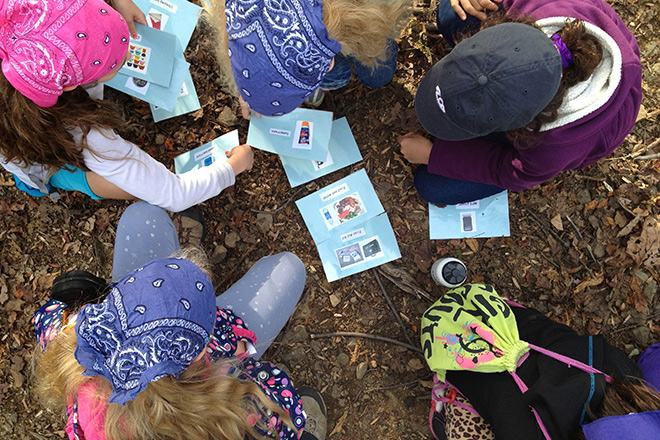As we start a new year, it’s a perfect opportunity to make a resolution to spend more time in nature with the young people in our lives.
In past generations, kids were naturally drawn to the outdoors. After school, kids would yell, “I’ll be back at dinner time!” as they raced out the door to play with their friends in backyards, parks, and woods. Some of those kids extended their outdoor time by adventuring with their family to hike, camp, canoe, or bike.
Over the years, kids’ daily outdoor play has drastically declined for multiple reasons—Richard Louv outlined many of them in his famous 2005 book, Last Child in the Woods. Since then, a movement has spread across environmental and parenting organizations and the outdoor retail industry to increase children’s time outdoors, whether it’s playing in local parks or going on trips with family or organized groups. The children and nature movement has worked for almost a decade to improve the declining health status of our nation’s youth and to inspire the next generation to carry the environmental torch.
Over the past ten years, the Leave No Trace Center for Outdoor Ethics has been one voice of many hoping to inspire youth to be stewards of the earth through their engagement in the outdoors. Leave No Trace implemented a few tools to educate kids about reducing their personal footprint on nature: a “PEAK program” (six activities to engage elementary-age kids to think about their impact on nature), a teen curriculum, a manual of 101 activities, and seven principles specifically written for kids. Leave No Trace educators engage elementary kids to teens, teaching them how they can be stewards of nature in small ways that make a big impact while having fun outdoors.
Below are seven tips to encourage the kids in your life to practice Leave No Trace.
- Know Before You Go. Kids have few choices in life; therefore, finding opportunities to give choice helps build buy-in and confidence. When planning an outdoor adventure, gain kids’ input. Have them research the weather forecast and plan the best clothing to wear, provide trail choices within their ability, and allow them to choose their lunch and snack food.
- Choose the Right Path. Play a game of “ninjas and detectives.” Encourage children’s imaginations while guiding their powers of awareness and conscious foot-stepping with the power of role-playing. Ask them to pretend they are ninjas or spies—or any characters that require them to observe their surroundings without leaving “clues” as to where they have been. Parents can play “detective” to follow the ninjas’ trails as they attempt to remain unseen and unheard.
- Trash Your Trash. Play “I spy” with trash by creating a competition among kids (or between kids and parents) to see who can collect the most litter. This activity gets kids thinking about the accumulation of trash and its impact on parks and communities.
- Respect Wildlife. Kids are naturally fascinated by animals they encounter outside, often wanting to touch or get close to them. Help them to understand how close they can safely be from an animal by asking them to stand with one arm raised straight out at shoulder height with their thumb up. Ask them to look at the animal with one eye closed and try to cover it with their thumbs. If they are far enough away, their thumbs will completely block sight of the animal.
- Be Careful with Fire. When camping, play a firewood relay race. Create groups of two or more (or have a competition between children and parents). The objective is to gather dead and downed firewood of appropriate size. Once retrieved, sequence the firewood from smallest to largest in diameter. Any firewood larger than kids’ wrists are disqualified. The team with the most appropriate firewood wins. Finish this game by explaining that firewood should be no larger in diameter because it takes too long to burn into ash, hindering the decomposition process.
- Leave What You Find. Give kids a camera to take photos of treasures they find on the trail. Use a photo collage application, such as PhotoLab, to encourage creativity and save and share their outdoor adventures. This reinforces that they can keep the memory while leaving the objects themselves in nature.
- Be Kind to Others. Encourage kids to be inclusive and polite when playing outdoors. Model and teach good manners, such as sharing the trail with others, and avoid bad behaviors, such as talking on cell phones while exploring.
Leave No Trace Center for Outdoor Ethics encourages everyone, adults and children, to practice the principles of leave no trace so that our collective small steps can lead to big changes.
About the author
-
 Jennifer Chambers State advocate for Leave No Trace
Jennifer Chambers State advocate for Leave No TraceJennifer Chambers is the Maryland state advocate for Leave No Trace, board chair of the American Hiking Society, a science teacher, and author of Best Hikes with Kids: Washington, DC, the Beltway, & Beyond.
